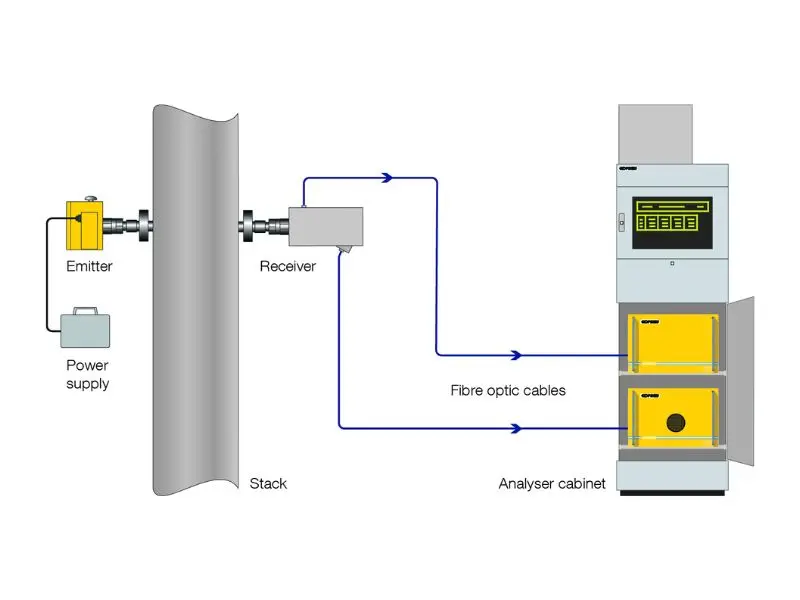An OPSIS System 400 always contains emitter, receiver, optical fibre, and analyser. The system is offered in three different technical versions:
· System 400CS where the light along the monitoring path is sent directly through the gas channel (“Cross Stack”)
· System 400FL where the monitoring path is placed in a bypass line with fast gas exchange (“Fast Loop”)
· System 400HWE where a small flow of gas is extracted at the monitoring point and led via a heated hose to the monitoring path where the gas concentration is analysed (“Hot Wet Exctractive”).
Regardless of the design, the systems can be extended with additional gases, more measuring paths, and also sensors and other accessories, both when ordering and afterwards. In many cases, a single monitoring system can monitor the concentrations of all relevant substances.
How it works
Each monitoring system is built around an analyser. Its task is to monitor the absorption of certain wavelengths of light coming from the monitoring path, and use this to calculate the concentration of different substances, such as NO, NH3, NO2, SO2, CO, CO2, HCl, and HF.
The AR600 is the most common type of analyser. It operates in the ultraviolet wavelength range and the technique is then called UV-DOAS. When monitoring in the infrared range, an AR650 analyser based on FTIR-DOAS technology is often used. In some cases, IR monitoring can also be made with an analyser that is essentially of the UV-DOAS type. It is then called AR620.
The DOAS technology is based on the emission of white (broadband) light in a narrow beam from a xenon lamp (emitter) and its capture by a receiver. Along the light beam, different types of pollutants absorb different wavelengths of light. It is this absorption that is monitored in the analyser. The open beam of light is also called the monitoring path because this is where the monitored concentration of pollutants and other substances are found.
OPSIS offers several different products to form the monitoring path. The ER060 series consists of separate emitter and receiver sets. The ER080 combines the emitter and receiver in the same unit. The choice of ER model depends on the type(s) of analysers used and the conditions at the installation site.







